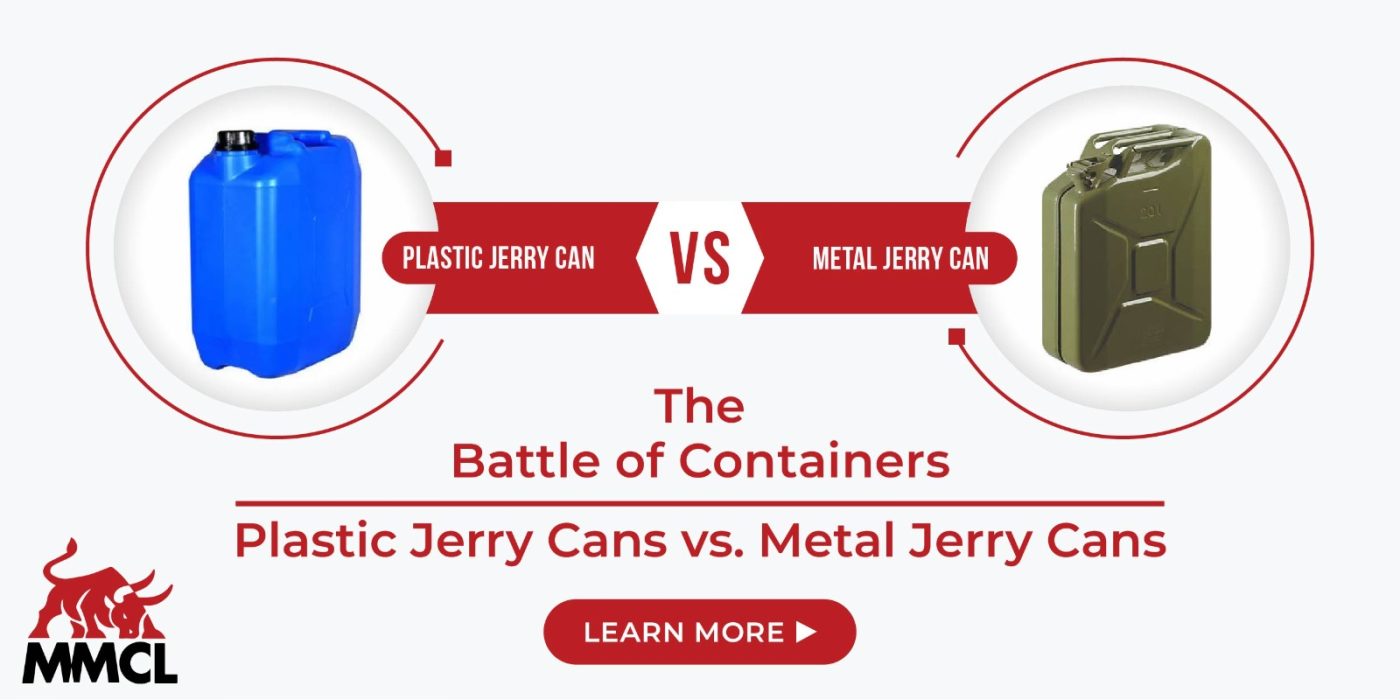Jerry Cans have been a mainstay in the storage vessels industry for many years. These versatile vessels, which are available in plastic or metal construction, provide reliability and durability for multiple purposes. These storage vessels, whether they are made of metal or plastic, are specifically authorized for fuel storage as it is an extremely combustible substance. Because fuel fumes are widely dispersed and highly concentrated, they can quickly reach an igniting source and present the most serious risk related to its storage.
Though both plastic and metal variants offer benefits, we are going to review the main differences between metal and plastic jerry cans to assist you in choosing the most suitable one for the task at hand.
1.Durability and Strength
Plastic Jerry Cans:
High-density polyethylene (HDPE) is the material that most plastic jerry cans are made of, and these jerry cans have garnered popularity since they are lightweight and resistant to corrosion. They can endure accidental impact and harsh handling as a result of their durability. To top it off, plastic jerry cans are an excellent option for outdoor pursuits like cruising, hiking, and camping because they are less likely to sustain punctures or dents.
Metal Jerry Cans:
Meanwhile, steel-based metal jerry cans have become recognized for their remarkable robustness and strength. They are appropriate for heavy-duty applications since they can withstand extreme conditions. Although manufacturers frequently add interior coatings to metal jerry cans to prevent rust and corrosion, these problems are nevertheless possible. These cans are ideal for transporting volatile liquids because of their superior fire resistance as well.
2.Portability and Transportation
Plastic Jerry Cans:
In terms of portability, plastic jerry cans offer a substantial benefit. Even when they are fully loaded, they are easier to move around and handle because of their lightweight framework. They are popular alternatives for individuals who require freedom of movement, such as campers, hikers, or those in need of emergency fuel storage.
Metal Jerry Cans:
Even though metal jerry cans weigh considerably more than their plastic counterparts, their increased durability makes up for it. Because of this characteristic, they are particularly designed for commercial applications or long-distance transportation of flammable liquids. Common applications for them include military operations as well as rescue and recovery activities when ruggedness is a must. Additionally, a metal fuel can is ideal if you want to prevent your fuel from turning excessively warm or cold while in transit because they are typically insulated with a dual-sided emulsion.
3.Chemical Compatibility and Safety
Plastic Jerry Cans:
One well-known feature of plastic jerry cans is their chemical compatibility. They are appropriate for holding a wide range of chemicals, fuels, oils, and liquids since they don’t react when exposed to various substances. To further ensure safety during transit, plastic jerry cans frequently feature tight, leak-proof lids. Nevertheless, they are not appropriate for the storage of highly combustible or flammable liquids. This is due to the fact that fuel could leach into plastic cans over time. Furthermore, plastic cans expand and compress in response to temperature variations. Thus, they will melt rather than explode.
Metal Jerry Cans:
When it comes to storing combustible compounds, metal jerry cans are exceptionally reliable. Owing to their ability to resist flames, they are frequently utilized in situations where safety is the priority. Their interiors might be prone to rusting or corrosion, thus it is not advised to store particular chemicals in them for an extended period. Moreover, metal jerry cans are environmentally beneficial even after they are no longer needed since they can be recycled.
Design Performance of Authorized Jerry Cans
Fuel storage cans constructed from permitted materials, whether plastic or metal, have some fundamental design elements. They feature a spring-loaded lid that seals the spout when released. Fuel vapors are prevented from leaking by the airtight seal created by the spring’s tension, which forces the lid shut. At about 5 psi levels, the spring tension is intended to let excessive internal vapor pressure escape. This particular construction keeps the fuel can from bursting in situations of severe temperatures.
A flame arrester screen is another feature included in authorized metal and plastic fuel storage cans. The flame arrester screen prohibits fuel within the vessel from being exposed to an external flame. The Occupational Safety and Health Administration mandates that all businesses and commercial establishments employ metal and plastic fuel cans that have been designated by UL or FM.
Final Remarks:
In the plastic vs. metal jerry cans discussion, each option has its unique advantages and applications. For both daily usage and recreational purposes, plastic jerry cans are suitable due to their excellent chemical compatibility, portability, and impact durability. On the flip side, metal jerry cans offer unmatched durability, longevity, and fire resistance, ensuring efficiency in challenging industrial settings and hazardous environments.
Choosing between metal and plastic jerry cans ultimately narrows down to the user’s specific requirements and conditions. One can choose the ideal jerry can for their application by carefully considering aspects such as the intended usage, the expected lifespan, and the types of substances that need to be stored.

